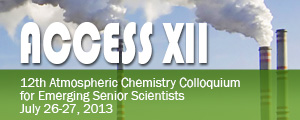Site Navigation
General Information
Environmental Science Programs
Atmospheric System Research (ASR)
The U.S. Department of Energy's Atmospheric System Research (ASR) is an observation-based research program created to advance understanding of the key interactions among aerosols, clouds, precipitation, radiation, dynamics, and thermodynamics, with the ultimate goal of reducing the uncertainty in global and regional climate models. General areas of research at BNL under this program include studies of aerosol and cloud lifecycles and cloud-aerosol-precipitation interactions. More...
ARM
The Atmospheric Radiation Measurement (ARM) External Data Center (XDC) identifies and acquires data from sources outside of the U.S. Department of Energy’s ARM Climate Research Facility and makes it available to climate researchers around the world. The original experiment design of the ARM User Facility included five permanent sites and an ARM Mobile Facility (AMF) to be deployed episodically for periods on the order of one year. The AMF tailors the sampling strategy of the instruments to accommodate the scientific needs of deployment, analyzing data, producing scientific products, interfacing with the ARM Climate Research Facility Board, and with the broader scientific community. More...
FASTER
The goal of the FAst-physics System TEstbed and Research (FASTER) project is to narrow uncertainty and biases in climate models. It uses continuous ARM measurements to enhance evaluation and development of techniques to incorporate fast processes involving clouds, precipitation, and aerosols into climate models. More...
Tracer Technology
The BNL Tracer technology Group uses perfluorocarbon tracers (PFTS) as a tool for understanding the processes that transport air, heat, water, and pollutants. PFTs can be detected at concentrations as low as 1 femtoliter per liter of air which makes them ideal for detecting leaks in underground pipes and other subsurface structures, quantifying building infiltration and for understanding the transport of materials in air over long distances (thousands of kilometers). Studies have included the NYC Urban Dispersion Program in which BNL partnered with eight other national laboratories and the Department of Homeland Security to understand the transport and dispersion of substances in the topologically complex NYC urban environment. More...
Environmental Technology
Scientists from BNL have installed an array of solar radiation detectors and cloud sensors at the Long Island Solar Farm (LISF), a 32-megawatt power-generating photovoltaic array developed on the Lab’s property by BP Solar and the Long Island Power Authority, to characterize the performance of LISF as a function of the prevailing meteorological conditions. The data will be used by researchers at Brookhaven and elsewhere to evaluate the feasibility of solar electric generation in the northeastern U.S. More...
Carbon Cycle Science
The Carbon Cycle Science & Technology Group aims to increase understanding of the impacts of global change on managed and unmanaged ecosystems and improve knowledge of possible global change mitigation approaches. More...
The Environmental Sciences Department is part of the Environmental, Biological, and Computational Sciences Directorate at Brookhaven National Laboratory.













